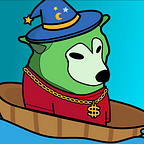娘化現象:美少女與多樣性的文化魅力(Moe Anthropomorphism: The Cultural Allure of Bishoujo and Diversity)
是說有一種現象,它通常出現在動漫遊戲中,所有人事時地物甚至是生理狀況都能夠被擬人化成為美少女的面容。雖然在當代社會大量綻放,但也有不少的性別爭議牽涉其中。
這個現象被稱為娘化現象,是近年來受到廣泛討論的一種文化現象。它以萬事萬物皆可以柔和、可愛、迷人的女性形象吸引觀眾,將非人類的事物或男性角色以女性化的方式呈現。
娘化現象使得各種事物在轉變中被賦予女性特質,讓它們更加可愛迷人或具有親和力。從古代的文化遺產到現代的家庭產品,它們都可能在娘化的世界中展現出迷人的女性形象。
從美學價值的角度來看,娘化的形象通常展現二次元的外貌,並符合被娘化事物的形象。這些形象在服飾和飾品上也會突顯特定的元素,例如草莓娘會呈現草莓圖案的紅色服裝和草莓結梗的髮型。這些娘化的形象可能有不同的個性,從溫柔可愛到霸道粗獷,這種多樣性的個性可能打破傳統對性別和角色的刻板印象,並增添了其美學價值。
娘化形象不僅可以展現不同層面的個性和魅力,還能激發人們對事物的情感共鳴。例如,鹽酥雞娘可能是一個宅女,愛喝啤酒,整天呆在家打電動,並蓋著自己的棉被。這種形象讓人感受到平淡生活的美好,並讓更多人在娘化形象中找到共鳴。
在不同領域,許多事物都可以進行娘化,如遊戲領域中的戰艦娘和賽馬娘。這些擬人化的角色不僅保留了原本事物的重要特點,還賦予了不同的個性和用途,使他們更具魅力和吸引力。同樣地,書籍娘和古蹟娘將經典讀物和文化古蹟轉化為美少女形象,讓人對文化歷史產生情感連結。
除了事物,一些男性歷史人物也可以被娘化,像中國歷史的三國和日本戰國時代的武將。這種娘化的過程融合了歷史文化和現代次文化的元素,讓這些歷史人物以全新的角度呈現,並激發人們對歷史的興趣。
然而,這種娘化現象也引起了爭議。一些人認為娘化強化了性別刻板印象,將女性角色局限於可愛、柔弱、依賴等形象。即使某些角色展現著強烈的美少女形象,但仍然處於一種乾淨的母性照顧角色。這種呈現方式可能對性別平等與女性形象的多樣性產生負面影響,限制了女性角色的發展和表達。另一方面,娘化現象也可能使角色被物化為滿足男性觀眾視覺慾望的物體,導致角色純粹被視為性對象,而忽略了他們的內在價值和故事。
娘化現象的批評和反響提醒我們要注意性別平等和兒童保護問題。我們應該平衡角色的外貌和個性特點,尊重性別平等,並避免物化角色。同時,娘化現象也是一種創造力和想像力的表達方式,提供了愉悅和娛樂的體驗。
總結來說,娘化現象是一種多樣性的文化現象,有著不同的評價和立場。我們應該尊重每個人對於自我表達、喜好和角色認同的權利,同時關注性別平等和多元性別表達。只有以一個尊重的心態來討論和探索娘化現象,我們才能創造一個更包容、更多元化的社會環境,並享受娘化所帶來的美學多樣性和社會影響力。
More: https://linktr.ee/sgd_go
-
Title: The Phenomenon of “Moe Anthropomorphism”: Exploring Cultural Diversity and Gender Controversies
There is a phenomenon that often appears in anime and games, where everything, including people, objects, and even physiological conditions, can be anthropomorphized into the features of a beautiful young girl. While it has become widespread in contemporary society, it is not without its share of gender controversies.
This phenomenon is known as “Moe Anthropomorphism” and has been extensively discussed in recent years as a cultural phenomenon. It attracts audiences with the idea that all things can possess gentle, cute, and charming female characteristics, portraying non-human entities or male characters in a feminized manner.
“Moe Anthropomorphism” endows various entities with feminine qualities during their transformation, making them more adorable, charming, or approachable. From ancient cultural heritage to modern household items, they can all showcase captivating female images in this “moe” world.
From an aesthetic standpoint, the “moe” images typically exhibit a two-dimensional appearance that aligns with the feminized portrayal. These images also emphasize specific elements in clothing and accessories; for instance, a “strawberry moe” character might wear a red outfit with strawberry patterns and sport a hairstyle resembling strawberry stems. These “moe” characters can have diverse personalities, ranging from gentle and cute to assertive and rough, potentially breaking traditional stereotypes about gender and roles and adding to their aesthetic value.
“Moe” characters not only display various personalities and charms but also evoke emotional resonance with people. For instance, a “Fried Chicken moe” character could be depicted as an otaku who loves drinking beer, spending her days at home playing video games and wrapped in her own blanket. Such an image evokes a sense of appreciation for the simple joys of life and allows more people to find resonance within these “moe” characters.
In various fields, many things can undergo “Moe Anthropomorphism,” such as “ship-girls” and “racehorse-girls” in the gaming domain. These anthropomorphized characters not only retain the essential characteristics of their original forms but also possess distinct personalities and purposes, making them more alluring and attractive. Similarly, “book-girls” and “historical site-girls” transform classic literature and cultural landmarks into adorable girl images, establishing an emotional connection with cultural history.
Moreover, some male historical figures can also be “moe-fied,” like the generals from China’s Three Kingdoms period or Japan’s Warring States era. This process blends elements of historical culture with modern subculture, presenting these historical figures in a new light and sparking interest in history from a different perspective.
However, this “Moe Anthropomorphism” phenomenon has also sparked controversies. Some argue that it reinforces gender stereotypes, confining female characters to cute, weak, and dependent images. Even when certain characters exude a strong “moe” appearance, they might still be portrayed in a nurturing, maternal role. Such presentations could have a negative impact on gender equality and the diversity of female representation, limiting the development and expression of female characters. On the other hand, “Moe Anthropomorphism” might also objectify characters, catering solely to the visual desires of male audiences, overlooking their intrinsic value and narratives.
The criticisms and reactions to the “Moe Anthropomorphism” phenomenon serve as reminders to pay attention to gender equality and child protection issues. We should strike a balance between appearance and personality traits of characters, respecting gender equality, and avoiding the objectification of characters. Simultaneously, “Moe Anthropomorphism” serves as a form of creativity and imagination, offering a pleasurable and entertaining experience.
In conclusion, “Moe Anthropomorphism” is a diverse cultural phenomenon with varying evaluations and stances. We should respect everyone’s right to self-expression, preferences, and role identities while also being mindful of gender equality and diverse gender expressions. By discussing and exploring “Moe Anthropomorphism” with a respectful mindset, we can create a more inclusive and diverse societal environment, embracing the aesthetic diversity and social impact it brings.
More: https://linktr.ee/sgd_go
